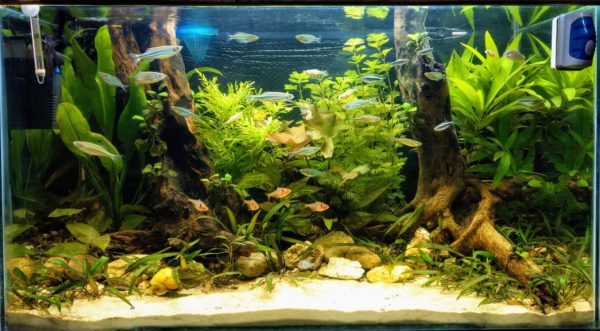Having a Fish Tank in Cuba

By Fabiana del Valle
HAVANA TIMES – Classical music, a book, and a fish tank were all my father needed to find peace. Since I was a child, I witnessed his determination to create improvised spaces to care for the few varieties allowed by his tight budget.
In 2022, my husband gifted us a larger fish tank with species we had only seen in books. I remember my old man sitting for hours in silence, observing the fish. It’s been a year since his departure, but when a new species arrives in our tank, it’s as if he could enjoy it.
Dariel, my husband, is an enthusiast of fishkeeping. His passion for planted aquariums has turned him into an artist in this field, and he still has a long way to go. Sometimes YouTube tutorials are not enough; when you live in a country with limited resources, you need to seek other answers, to experiment even at the risk of failure.
We established a business that has been growing over time. At first, it was an experiment, but it has become the livelihood of our family, at least allowing us to buy the essentials to survive.
Most Cuban breeders have emigrated, increasing demand among sellers like us. Costs are exaggerated, fish come out of ponds into smaller and smaller stores, and the varieties that were once bred are reduced.
In any Latin American country, with some money, you can acquire an air pump, an electric filter, or a submersible heater. In Cuba, it’s not as simple as having the money: often the aquarist must manufacture them. An air pump made with an electric coil and a valve made of rubber hose is the most common here.
This doesn’t mean that if you need an air pump, you can’t get one. In some specialized stores like ours, handmade models are offered, which provide acceptable service, and imported air pumps can also be found. Of course, the price to pay is not cheap!
One of the critical materials is glass. Such a situation has led to greater ingenuity, like using glass from car windows or breeding fish in almost any container capable of storing water in appropriate sanitary conditions. The cost of silicone increases alarmingly, all of this causes a fish tank to reach prices unattainable for the average Cuban.
Since they are made according to the size of the glass available, there are plenty of aquariums ranging from 40 to 60 liters more or less, in which the fish can live a little cramped for space.
Aquariums of 120 or 150 liters are uncommon because the price is quite high. For example, a 40-liter one, with an air pump and a lid with lighting, can cost around 8,000 pesos. Much more than what an average Cuban earns in a monthly salary.
Because of all this, we have difficult weeks, sales are low, and the money invested is a lot. We learned over time not to despair; sooner or later, someone passionate about fish or wanting to venture into this fascinating hobby comes to our store.
Cuban aquatics struggles for its permanence, relying on the passion and sacrifice of a people who suffer from scarcity, blackouts, exorbitant prices, precarious healthcare, and inefficient food, a people who release stress sitting in an armchair contemplating how their fish thrive on the other side of the glass.
Read more from the diary of Fabiana del Valle here on Havana Times.





